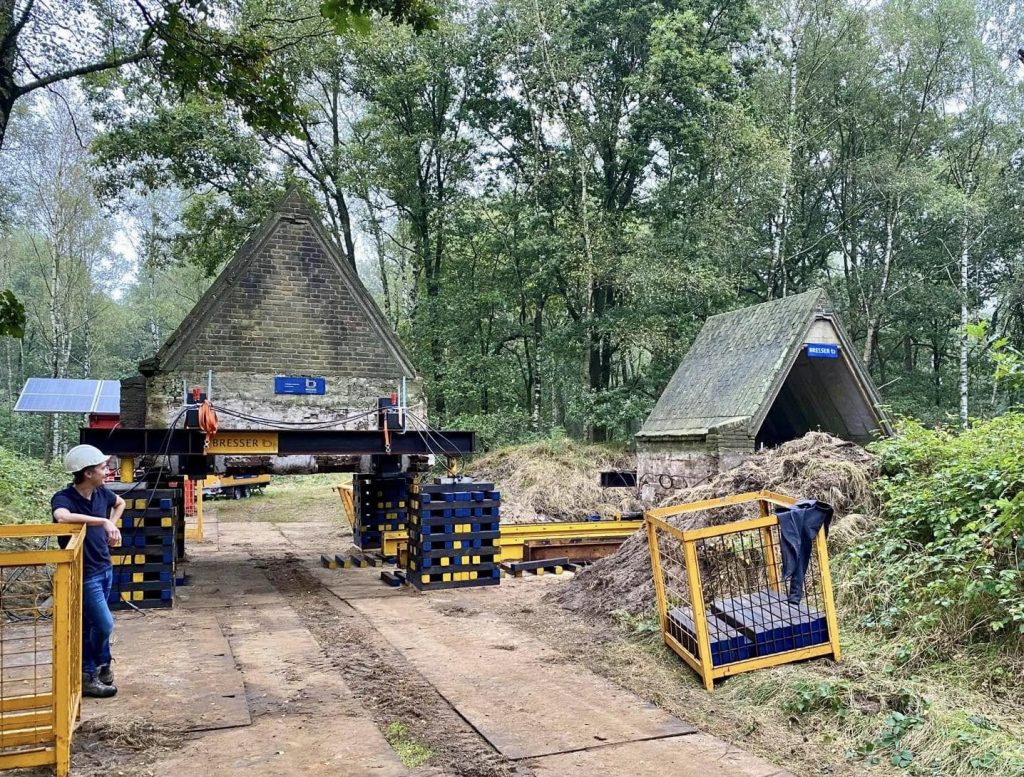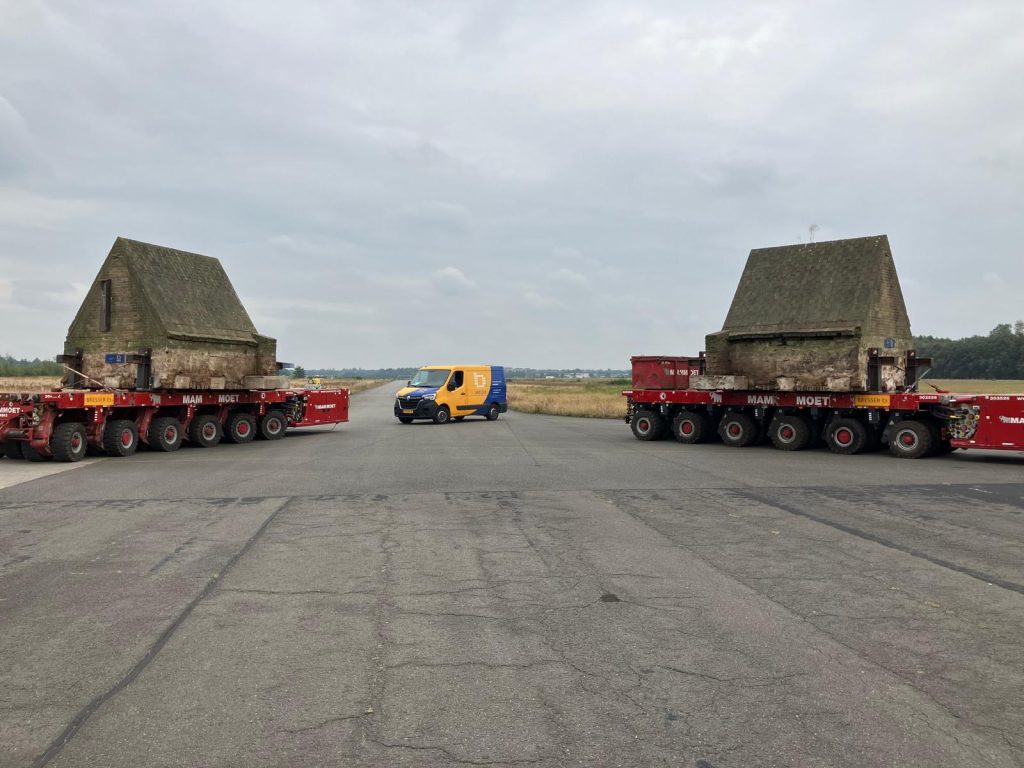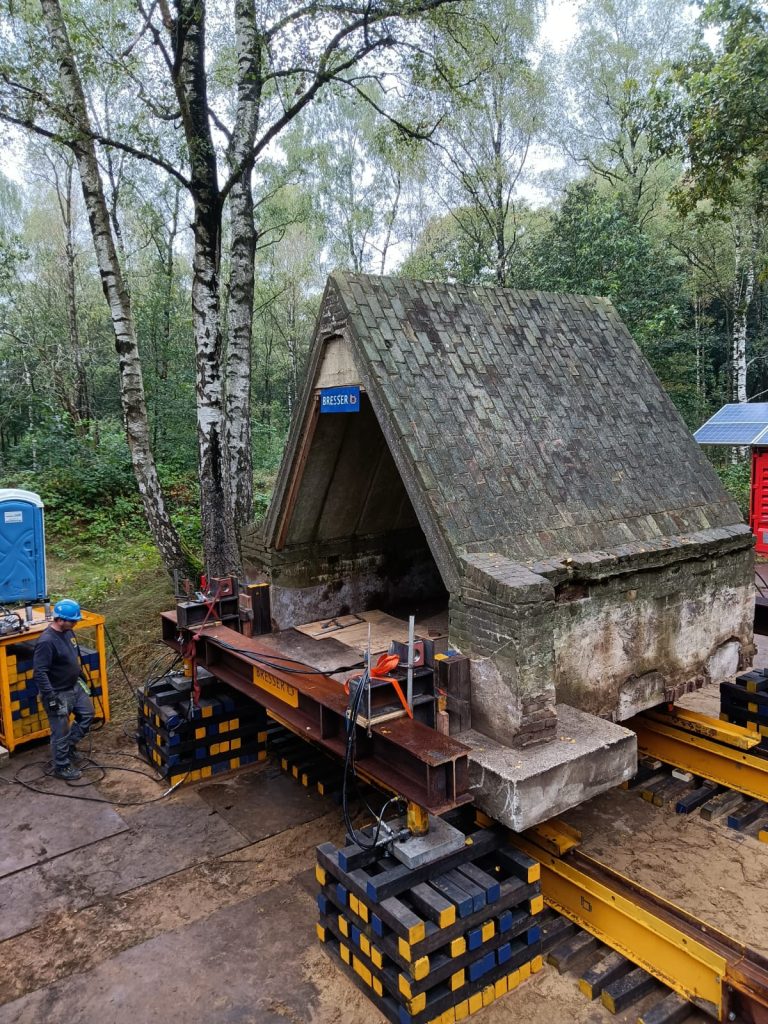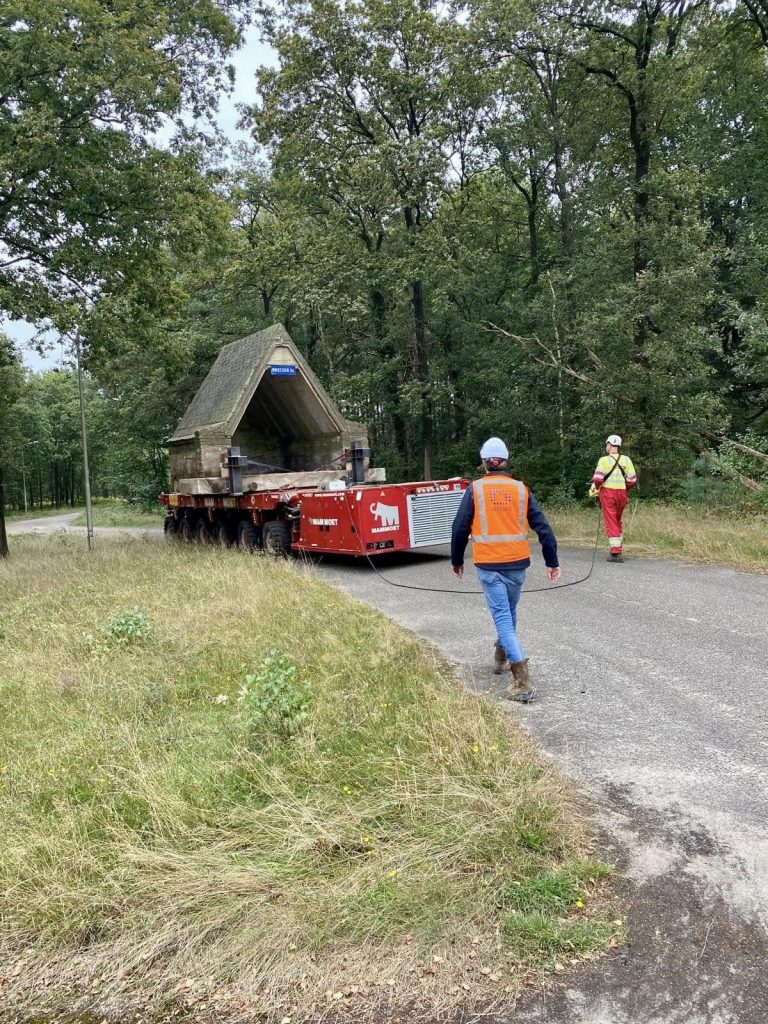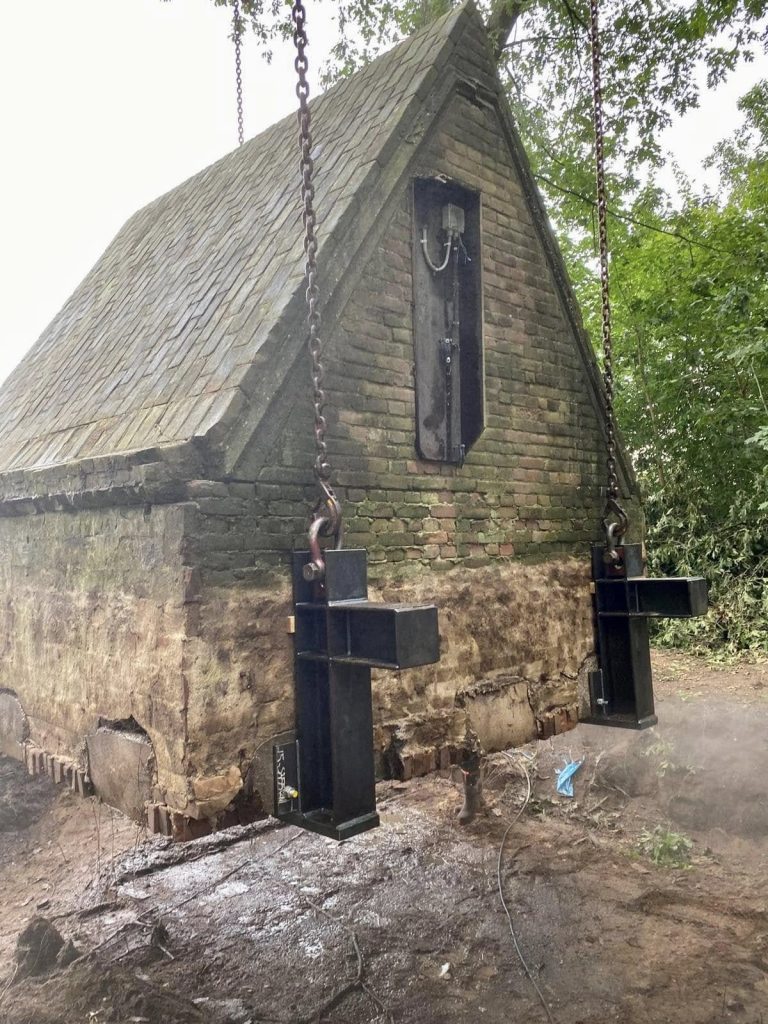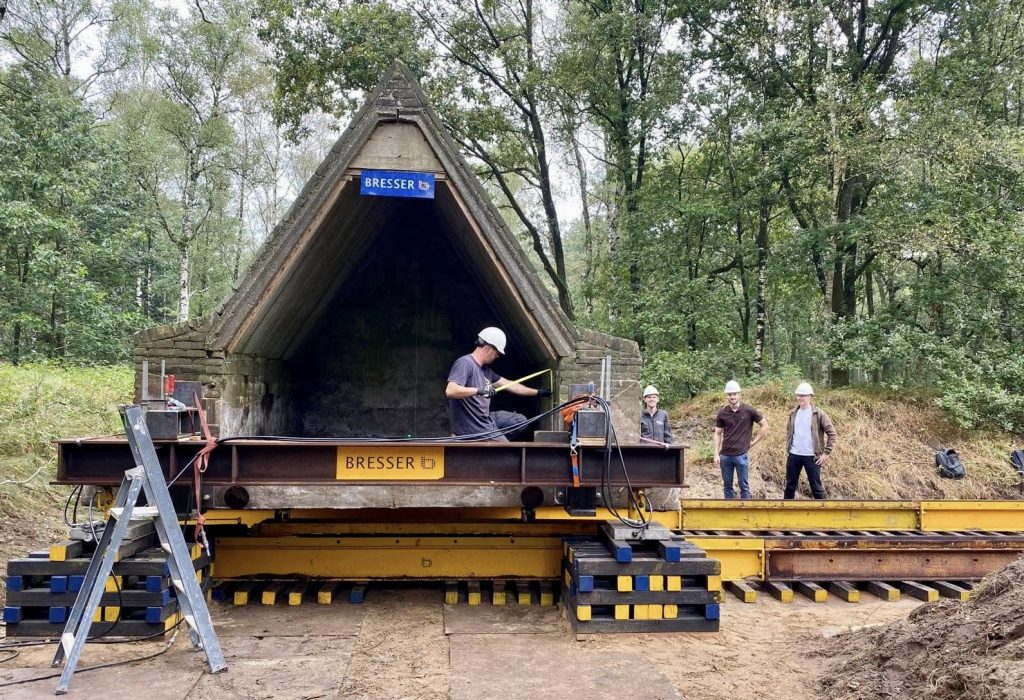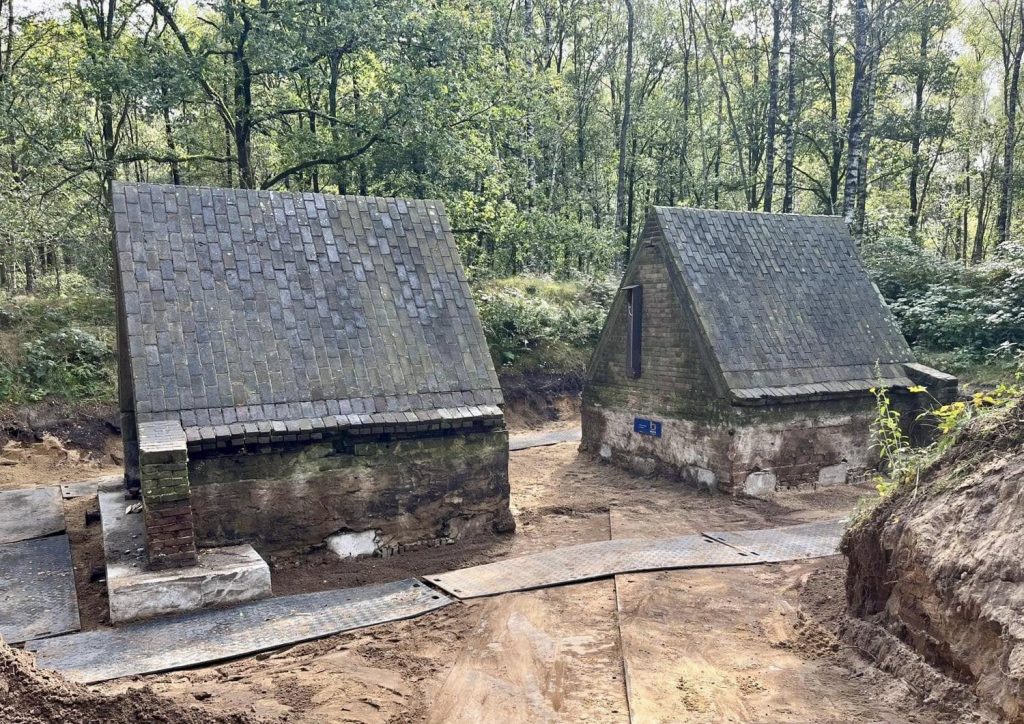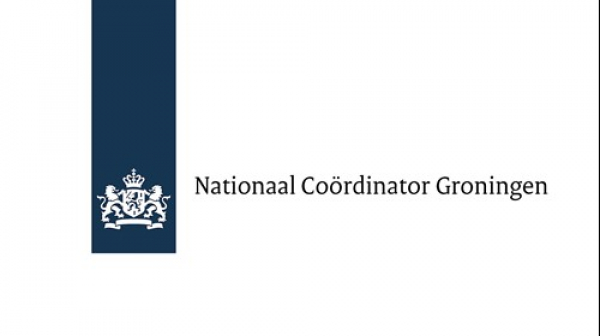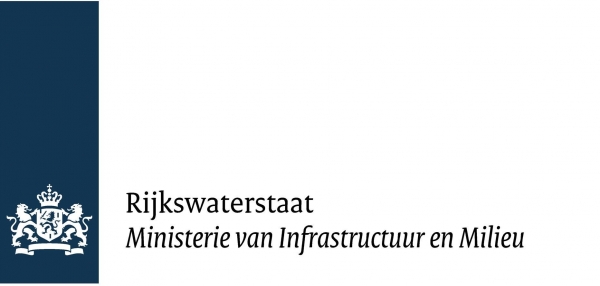WWII ammunition bunkers moved to Soesterberg airfield museum
Bresser successfully moved two WWII ammunition bunkers to the Dutch museum park Vliegveld Soesterberg over a distance of three kilometres. The bunkers, each weighing 30,500 kg, were first lifted by crane onto special vehicles (SPMTs). This was followed by a drive over the public road and the former runway. Near their final destination, the bunkers were taken over by a vertical jack construction. Bresser then gradually pushed the bunkers into their final position, using two sliding track systems (at a 90-degree angle). The bunkers were then restored.
At ‘Park Vliegbasis Soesterberg’, the former German bunkers are open to the public again. Indeed, the more than 80-year-old ammunition bunkers are an interesting example of shrapnel-free ammunition storage in prefabricated elements, which were used by the German Luftwaffe. For the past 20 years, the ammunition bunkers were in a temporary location. However, their existence was threatened by plans for area development. Therefore, they had to be relocated somewhere else. The Utrechts Landschap Foundation took over the military heritage and had it moved to the museum park.
It is great that the bunkers will be preserved for the future and the public can take a look at this special military heritage!
